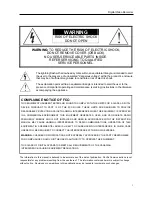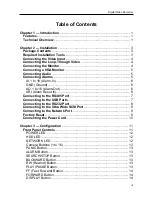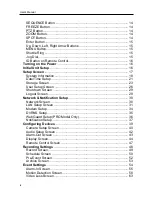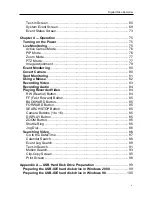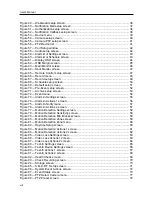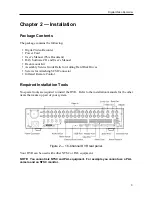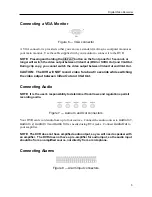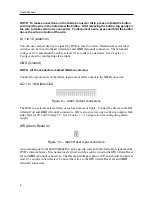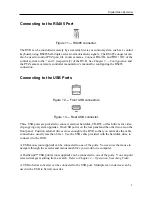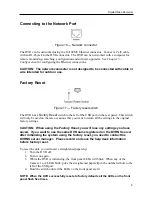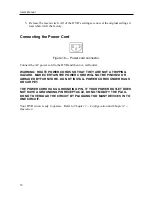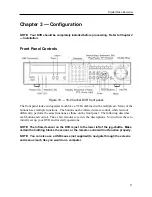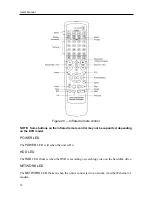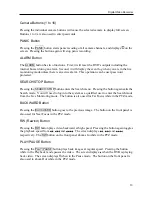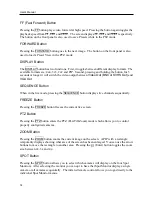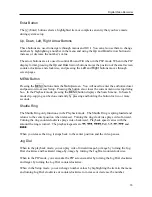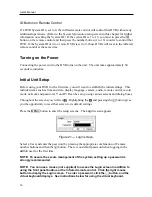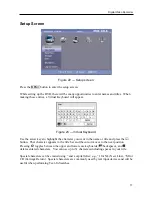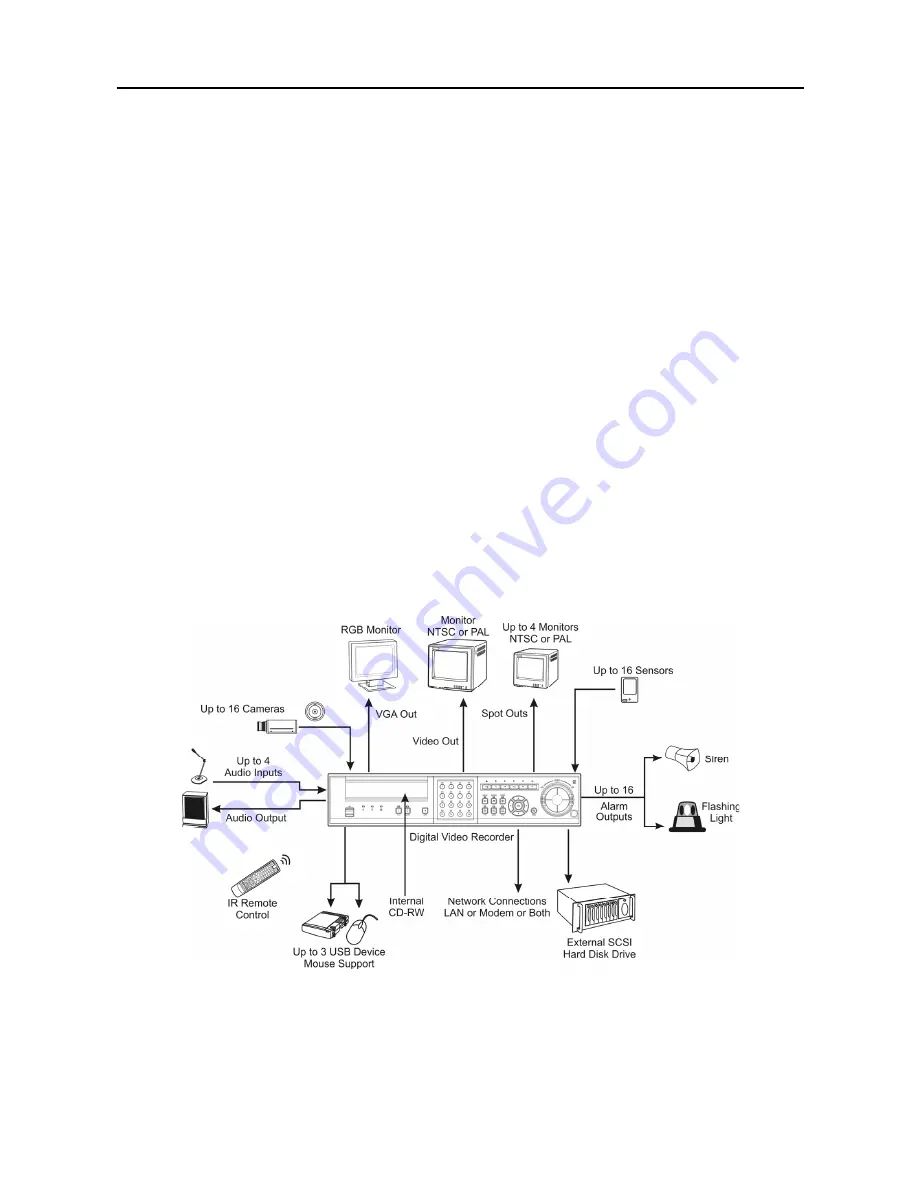
User’s Manual
2
Digitally recorded video has several advantages over analog video recorded on tape. There is
no need to adjust tracking. You can freeze frames, fast forward, fast reverse, slow forward and
slow reverse without image streaking or tearing. Digital video can be indexed by time or events,
and you can instantly view video after selecting the time or event.
Your DVR can be set up for event or time-lapse recording. You can define times to record, and
the schedule can change for different days of the week and user defined holidays.
The DVR can be set up to alert you when the hard disk drive is full, or it can be set to record over
the oldest video once the disk is full.
Your DVR uses a proprietary encryption scheme making it nearly impossible to alter video.
You can view video and control your DVR remotely by connecting via modem or Ethernet.
There is a SCSI port that can be used to record or archive video to external hard disk drives, and
there are also three USB ports that can be used to upgrade the system or copy video clips to
external hard disk, CD-RW and flash drives.
NOTE: This manual covers the 9- and 16-channel digital video recorders. The DVRs are
identical except for the number of cameras and alarms that can be connected and the
number of cameras that can be displayed. For simplicity, the illustrations and
descriptions in this manual refer to the 16-camera model.
Figure 1 — Typical DVR installation.
Summary of Contents for PDR-9LX
Page 1: ......
Page 2: ......
Page 12: ...User s Manual x...
Page 86: ...User s Manual 74...



